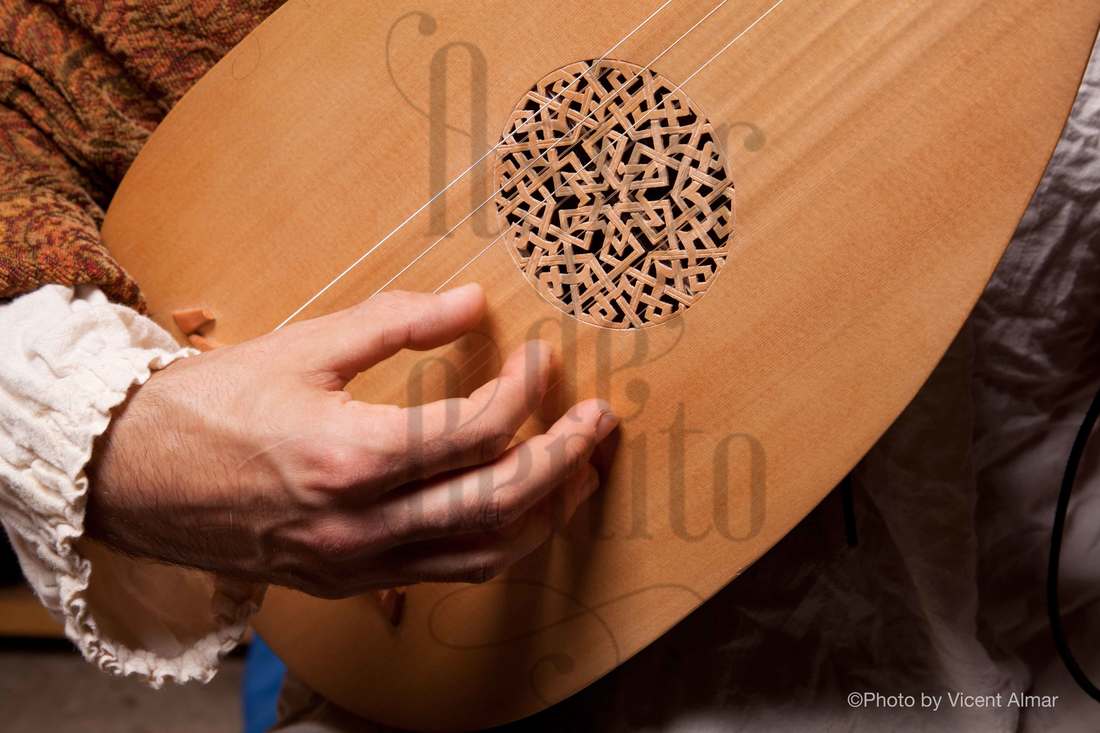RENAISSANCE LUTE
|
In the early sixteenth century, due to the new expressive needs of Renaissance polyphony, the medieval lute begins to suffer a series of changes that make it more versatile: First, plectrum technique is left to begin playing with fingers, which can play several strings at once, and increases its number of strings, 5 courses at first to 6, up to 10 at the beginning of the seventeenth century.
Vertical Divider
|
Its importance in European music of this time is evidenced by the vast legacy of works written by composers like da Milano or Negri in Italy, Attaingnant and Le Roy in France, Judenküning in Germany…
Another fact that demonstrates its importance is the fact that the builders of instruments from this period are known by the French voice of luthier (luth = lute), although curiously in Spain was used the term violero. |
7-course lute
Own design based on Hans Frei’s originals. 9 staves body in Walnut, Maple, Cherry or Cypress. European spruce top. Ebony, Pearwood, Olive or Boxwood fingerboard and pegs. Pearwood Bridge. Rosette carved directly into the top. Finished with shellac but waxed top. String length: 600 mm.







